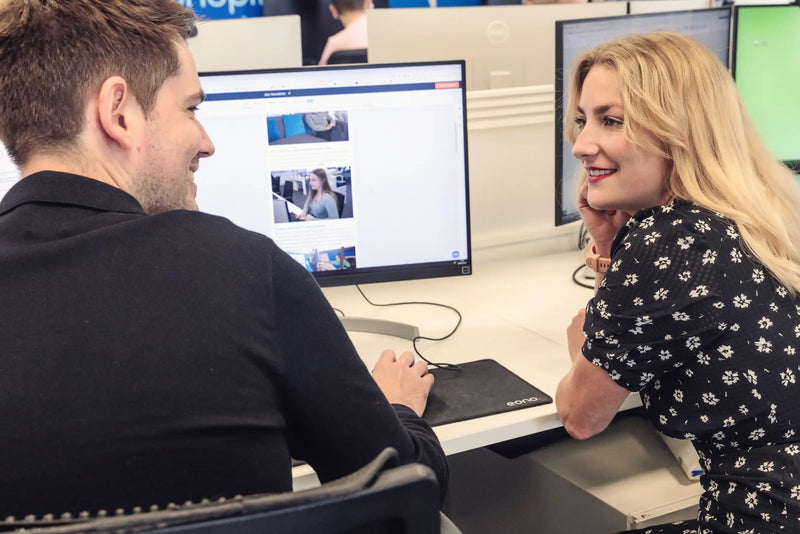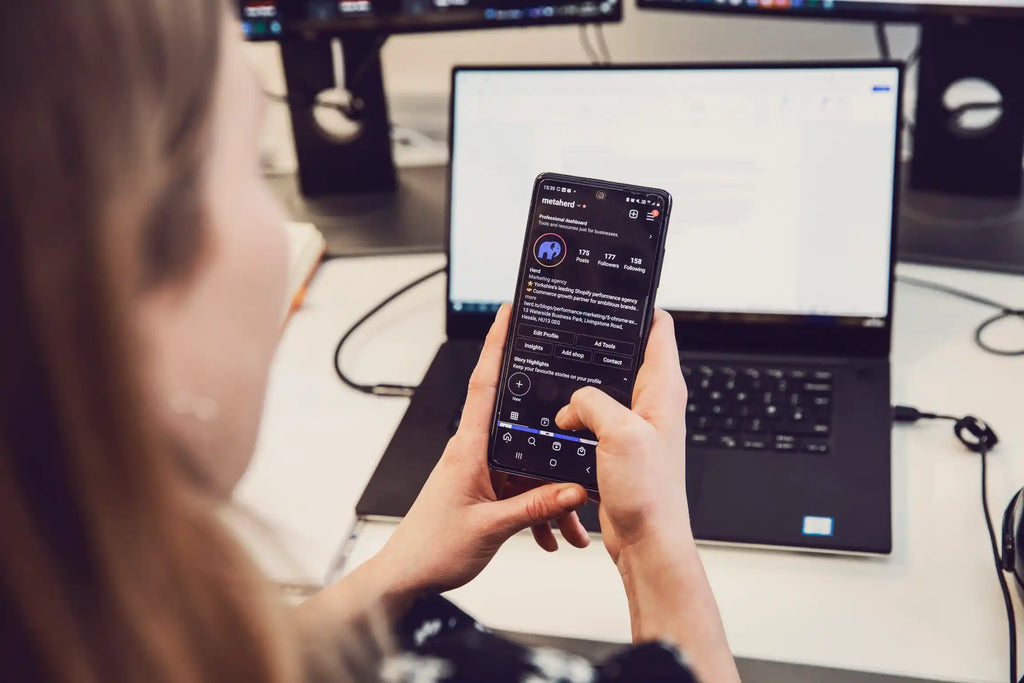3 things I’ve learnt about Digital PR in the last 3 years
- Leah Archibald
- Read time: 8 minutes

On March 1st, I celebrated my third year here at Herd. Three years have flown by, and because I’m quite partial to some cheese - it doesn’t feel like two minutes since I was writing my first blog.
I had not long since graduated with a 2:1 in English Literature when I entered the world of marketing, an interest of mine that I was hungry to learn more about as a post-grad. Joining as a junior, learning and development opportunities came in thick and fast, and juggling hats, plates, and workloads soon became second nature to me.
My first win in my first month was gaining coverage for one of our partners in The Times and Zoopla, which I won Employee of the Month for. That’s when I got a taste for storytelling, and in return, securing quality backlinks and spreading brand awareness!
While I was feeling all reflective, I realised that I am not the only one that has developed over the years, but Digital PR has grown and adapted too.
In just three years, the methods we use to source and spread information, and how we present content to people, have changed the PR game and I'll explain why. I’ve picked three key lessons I’ve learnt over the last three years.
1. How to harness relationships in public relations

Over the years, the landscape of PR and journalism has undergone a massive transformation, reshaping the dynamics of our relationships with journalists and online publications. Initially, my approach relied heavily on strategic storytelling and persuasive communication with journos and writers alike. However, as the digital age continues to unfold, so have the intricacies of our interactions.
With social media and many other online platforms, the traditional gatekeeping role of journalists has gradually crumbled. Today, journalists are inundated with pitches and press releases, making it necessary for PR professionals to adapt their outreach strategies.
Not only this, but adapting the stories they are telling, of course.
In response to these shifts, my approach has evolved to embrace a more personalised and tailored attitude to content creation and outreach than ever before. This means less group emails and more individual pitches, avoiding generic pitches that don’t bring any value to the journalist.
Recognising the importance of building authentic relationships, I've shifted towards fostering genuine connections with journalists, understanding their preferences, interests, and writing styles.
Outreach tools like Buzzstream are a great way to adapt a core press release one at a time, to ensure that they are optimised for that specific journalist and publication. You can also easily group media lists into your themes, or use certain subject lines, which help streamline the outreach process.
This approach not only ensures that our pitches resonate on a deeper level but also cultivates a sense of trust and mutual respect. Yes, crafting a bespoke press release for dozens of titles for each campaign takes time, but it’ll give you brownie points from journalists and increase your chances of coverage.
My top tip: In 2024, PRs should focus on creating personalised and concise content more than ever, rather than overwhelming journalists with lots of generic messages and long-winded stories.
2. The PR-motsphere has changed, and continues to

Like any industry but perhaps at a faster past than most, the digital environment has changed in the last three years and that has been driven by two significant changes. Firstly, there's an abundance of content and data out there, presenting both opportunities and challenges when it comes to ideating a story.
Secondly, the way companies and professionals utilise this wealth of information is crucial. The art of using it well is by blending data, narratives, and visuals to empower people to make impactful decisions or feel some kind of emotion. Adding statistics strengthens this by mixing unique and insightful elements to stories and visuals that will set your content apart from the rest.
By prioritising data-driven storytelling (but remaining vigilant when sourcing information to ensure it’s credible) you can elevate your content and engage your audience effectively. Avoid overcompensating with numbers but support your narrative with facts or figures to showcase expertise and knowledge in the topic before providing the solution for your reader.
To craft truly compelling and educational narratives, it's essential to uncover unique insights that captivate your audience. Begin by asking yourself - what distinct perspectives can I extract from the narrative? How can I swiftly authenticate these insights? And importantly, how can I go above conventional prose to engage my audience on a deeper level?
My top tip: It’s paramount to stand out in the noisy, over-crowded space of PR. By stregnthening your story with impactful statistics, you'll lay the foundation for narratives that not only resonate with readers, but also inspire lasting impact.
3. Though using AI can help, you can do it better

Over the past three years, there’s been a surge in usage of AI among PR professionals. More and more PRs are turning to tools like ChatGPT or similar, to swiftly produce pieces like expert quotes to save time and meet the tight deadlines of journalists.
As a consequence of this, AI-driven content has become increasingly prevalent, the journalists will get quicker (and probably a lot more) responses from PRs. A downfall of this means there's more of us competing for the journalist’s attention. However, and why I refuse to fall victim to the regular use of ChatGPT, it runs the risk of tonnes of content being duplicated.
Adapting to this evolution demands a fresh perspective on content creation. It necessitates the eradication of superfluous content and the provision of high-value material that aligns with user intent. Automation tools do streamline some processes and machine learning capabilities are becoming more and more sophisticated, but I believe it should be used with caution.
Us creatives clearly have the knowledge and passion to excel in our roles, so why waste it?! I love writing, so if I can, I tend to avoid using AI to create pieces for me that I am more than capable to do, myself.
My top tip: AI and automation can be a lifesaver, whether you're running behind on a deadline, feeling stuck for ideas, or just not liking what you've written. But it's important to remember that PR is your passion and your craft. Don't let it take over your job completely!
Upon reflection…
My journey in Digital PR over the last few years has been nothing short of eventful. Having PR and Content in my title, means that I have also had to ‘up’ my blog and copywriting game, and obviously, ensure that the content I create is optimised for search and interesting enough to get picked up.
Armed with innovative tactics, I've navigated the intricate landscape of media coverage, securing exposure for a diverse array of industries and businesses. From the giants of household brands to the budding businesses, eager to make their mark – I have pitched, and I have PR’d.
Through strategic storytelling and persuasive communication, I've forged lasting partnerships with journalists and media outlets from the get-go. Relationship building is an imperative part of the job, but no matter how much you get to know journalists and publications, only good press content and campaigns will get picked up.
Our industry has most definitely changed over the course of the last few years, making it harder than ever to get brands and businesses featured in publications.
A census wide survey revealed last year that there are almost 9,000 more PRs than journalists in England, Wales and Northern Ireland, highlighting the daily battle we face to get noticed in a full inbox. However, us PRs are resilient, determined, and motivated - no challenge should feel too big to conquer.
Despite setbacks, constant changes to the news agenda and the fight for the sell-in we push on through.
After all, it is PR not ER!